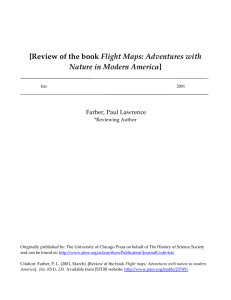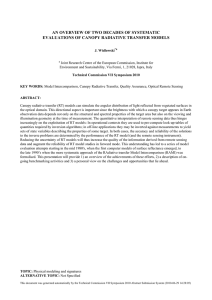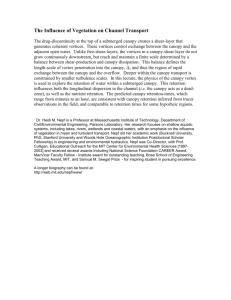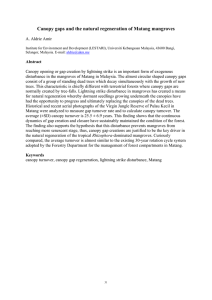GE/BI525 – Homework #2.
advertisement
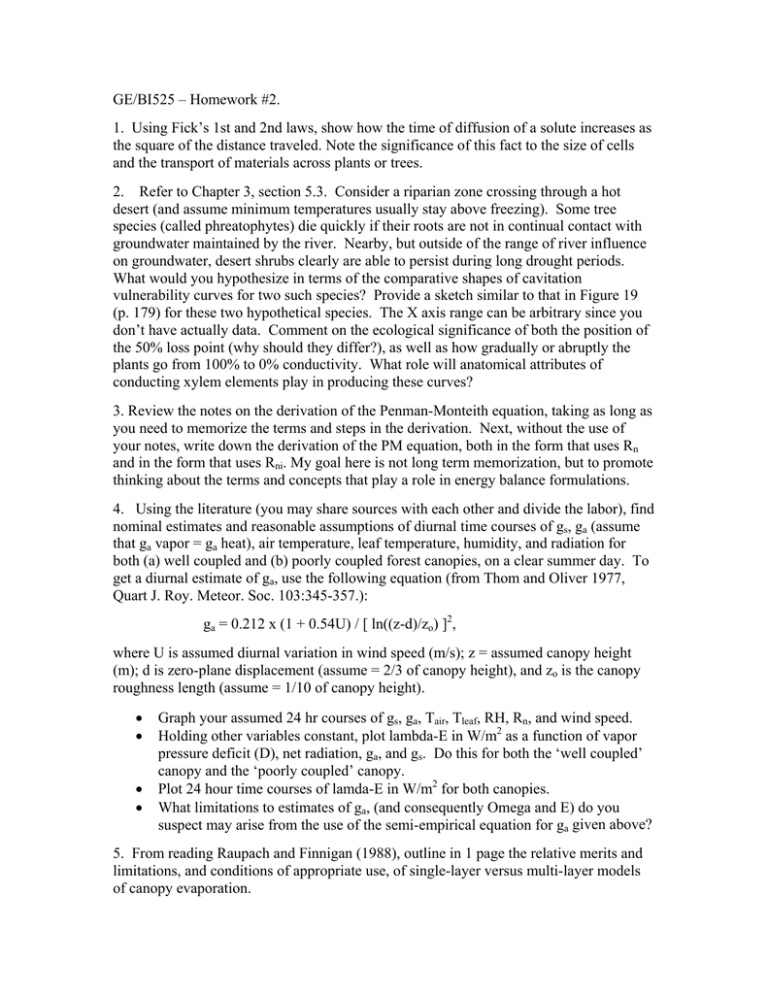
GE/BI525 – Homework #2. 1. Using Fick’s 1st and 2nd laws, show how the time of diffusion of a solute increases as the square of the distance traveled. Note the significance of this fact to the size of cells and the transport of materials across plants or trees. 2. Refer to Chapter 3, section 5.3. Consider a riparian zone crossing through a hot desert (and assume minimum temperatures usually stay above freezing). Some tree species (called phreatophytes) die quickly if their roots are not in continual contact with groundwater maintained by the river. Nearby, but outside of the range of river influence on groundwater, desert shrubs clearly are able to persist during long drought periods. What would you hypothesize in terms of the comparative shapes of cavitation vulnerability curves for two such species? Provide a sketch similar to that in Figure 19 (p. 179) for these two hypothetical species. The X axis range can be arbitrary since you don’t have actually data. Comment on the ecological significance of both the position of the 50% loss point (why should they differ?), as well as how gradually or abruptly the plants go from 100% to 0% conductivity. What role will anatomical attributes of conducting xylem elements play in producing these curves? 3. Review the notes on the derivation of the Penman-Monteith equation, taking as long as you need to memorize the terms and steps in the derivation. Next, without the use of your notes, write down the derivation of the PM equation, both in the form that uses Rn and in the form that uses Rni. My goal here is not long term memorization, but to promote thinking about the terms and concepts that play a role in energy balance formulations. 4. Using the literature (you may share sources with each other and divide the labor), find nominal estimates and reasonable assumptions of diurnal time courses of gs, ga (assume that ga vapor = ga heat), air temperature, leaf temperature, humidity, and radiation for both (a) well coupled and (b) poorly coupled forest canopies, on a clear summer day. To get a diurnal estimate of ga, use the following equation (from Thom and Oliver 1977, Quart J. Roy. Meteor. Soc. 103:345-357.): ga = 0.212 x (1 + 0.54U) / [ ln((z-d)/zo) ]2, where U is assumed diurnal variation in wind speed (m/s); z = assumed canopy height (m); d is zero-plane displacement (assume = 2/3 of canopy height), and zo is the canopy roughness length (assume = 1/10 of canopy height). • • • • Graph your assumed 24 hr courses of gs, ga, Tair, Tleaf, RH, Rn, and wind speed. Holding other variables constant, plot lambda-E in W/m2 as a function of vapor pressure deficit (D), net radiation, ga, and gs. Do this for both the ‘well coupled’ canopy and the ‘poorly coupled’ canopy. Plot 24 hour time courses of lamda-E in W/m2 for both canopies. What limitations to estimates of ga, (and consequently Omega and E) do you suspect may arise from the use of the semi-empirical equation for ga given above? 5. From reading Raupach and Finnigan (1988), outline in 1 page the relative merits and limitations, and conditions of appropriate use, of single-layer versus multi-layer models of canopy evaporation.





